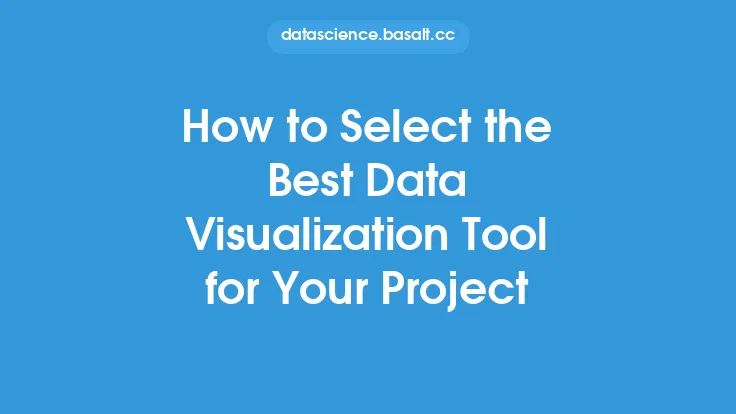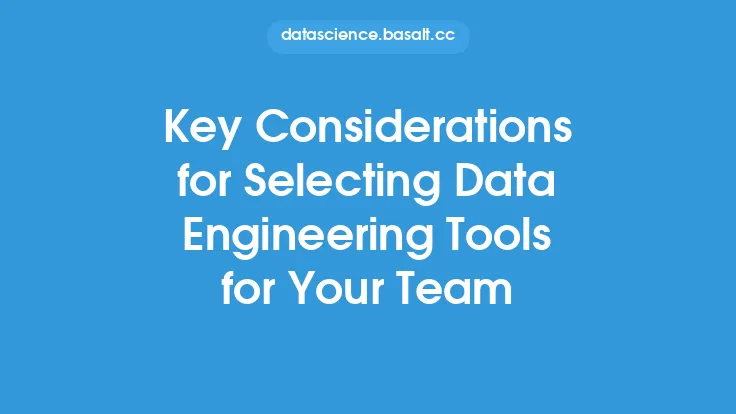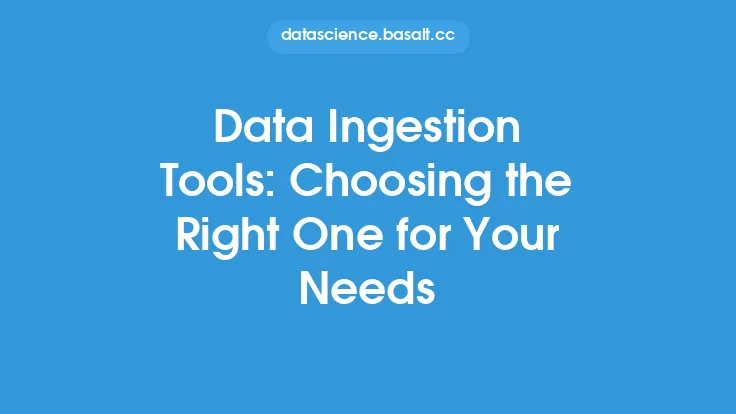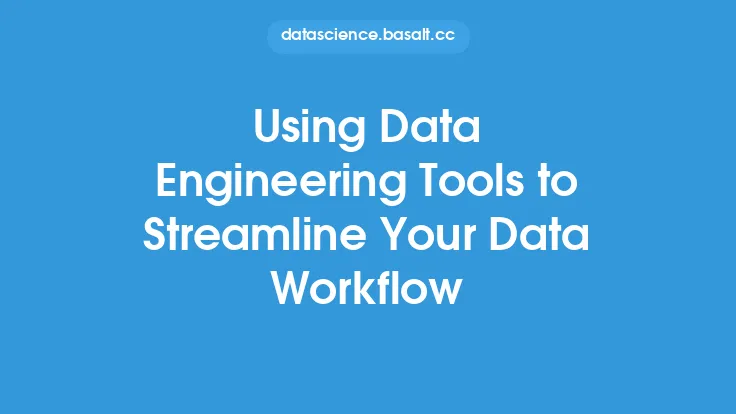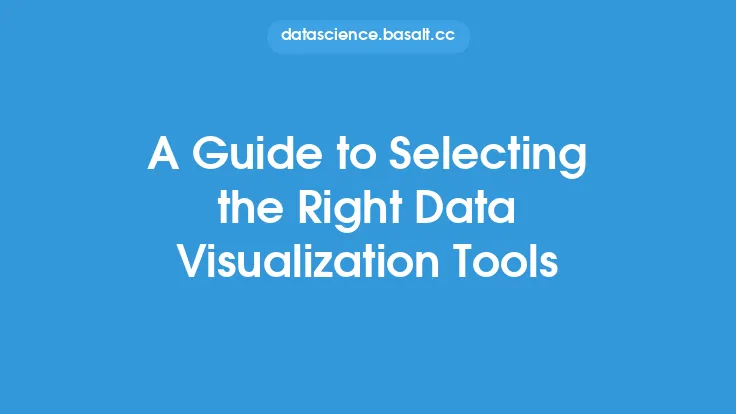When it comes to data engineering, choosing the right tools for your project is crucial for its success. With the vast array of tools available, it can be overwhelming to decide which ones to use. In this article, we will explore the key factors to consider when selecting data engineering tools, and provide guidance on how to make the right choice for your project.
Understanding Your Project Requirements
Before selecting data engineering tools, it's essential to have a clear understanding of your project requirements. This includes identifying the type of data you will be working with, the scale of the project, and the desired outcomes. Consider the following factors:
- Data volume: How much data will you be processing, and what is the expected growth rate?
- Data variety: What types of data will you be working with, such as structured, semi-structured, or unstructured data?
- Data velocity: How fast is the data being generated, and how quickly do you need to process it?
- Data complexity: How complex is the data, and what level of processing is required?
- Scalability: How scalable does your system need to be, and what are the expected traffic and usage patterns?
Evaluating Data Engineering Tool Categories
Data engineering tools can be broadly categorized into several groups, including:
- Data ingestion tools: These tools are used to collect and transport data from various sources to a centralized location.
- Data processing tools: These tools are used to transform, aggregate, and analyze data.
- Data storage tools: These tools are used to store and manage data.
- Data visualization tools: These tools are used to present data in a meaningful and interpretable way.
- Data governance tools: These tools are used to manage data quality, security, and compliance.
When evaluating data engineering tool categories, consider the specific needs of your project and the tools that will best support your goals.
Assessing Tool Features and Capabilities
When assessing data engineering tools, consider the following features and capabilities:
- Performance: How well does the tool perform under heavy loads, and what are its scalability limitations?
- Security: What security features does the tool offer, such as encryption, access controls, and authentication?
- Integration: How easily does the tool integrate with other tools and systems, and what APIs or interfaces are available?
- Customizability: How customizable is the tool, and what options are available for tailoring it to your specific needs?
- Support: What level of support does the tool offer, including documentation, community resources, and commercial support?
- Cost: What is the total cost of ownership for the tool, including licensing fees, maintenance costs, and operational expenses?
Considering Open-Source vs. Proprietary Options
When choosing data engineering tools, you will often need to decide between open-source and proprietary options. Open-source tools offer several benefits, including:
- Community support: Open-source tools often have large and active communities, which can provide valuable support and resources.
- Customizability: Open-source tools can be customized to meet specific needs, and users can modify the code to suit their requirements.
- Cost-effectiveness: Open-source tools are often free or low-cost, which can be attractive for projects with limited budgets.
However, proprietary tools also have their advantages, including:
- Commercial support: Proprietary tools often come with commercial support, which can provide a higher level of reliability and responsiveness.
- Integration: Proprietary tools may offer tighter integration with other tools and systems, which can simplify deployment and management.
- Security: Proprietary tools may offer advanced security features, such as encryption and access controls, which can provide an additional layer of protection.
Evaluating Cloud-Based vs. On-Premises Options
When selecting data engineering tools, you will also need to decide between cloud-based and on-premises options. Cloud-based tools offer several benefits, including:
- Scalability: Cloud-based tools can scale quickly and easily, which can support large and growing projects.
- Flexibility: Cloud-based tools can be accessed from anywhere, which can support remote work and collaboration.
- Cost-effectiveness: Cloud-based tools can reduce capital expenditures and operational expenses, which can be attractive for projects with limited budgets.
However, on-premises tools also have their advantages, including:
- Control: On-premises tools provide more control over the infrastructure and data, which can be important for projects with sensitive or regulated data.
- Security: On-premises tools may offer advanced security features, such as encryption and access controls, which can provide an additional layer of protection.
- Customizability: On-premises tools can be customized to meet specific needs, and users can modify the code to suit their requirements.
Creating a Proof of Concept
Once you have narrowed down your options, it's essential to create a proof of concept to test and evaluate the tools. A proof of concept should include:
- A small-scale deployment: Deploy the tool in a small-scale environment to test its performance and functionality.
- Realistic data: Use realistic data to test the tool's capabilities and identify any potential issues.
- Evaluation criteria: Establish clear evaluation criteria to assess the tool's performance and suitability for your project.
By creating a proof of concept, you can gain hands-on experience with the tool and make a more informed decision about its suitability for your project.
Conclusion
Choosing the right data engineering tools for your project is a critical decision that can have a significant impact on its success. By understanding your project requirements, evaluating tool categories and features, considering open-source and proprietary options, and creating a proof of concept, you can make an informed decision and select the tools that best support your goals. Remember to stay focused on your project's specific needs and avoid getting distracted by neighboring articles or trendy tools. With the right tools and a clear understanding of your project requirements, you can build a scalable and efficient data engineering system that supports your business goals.
